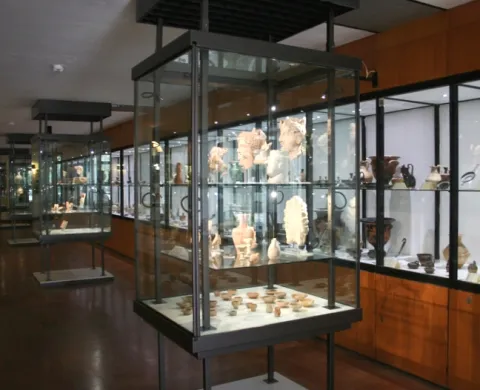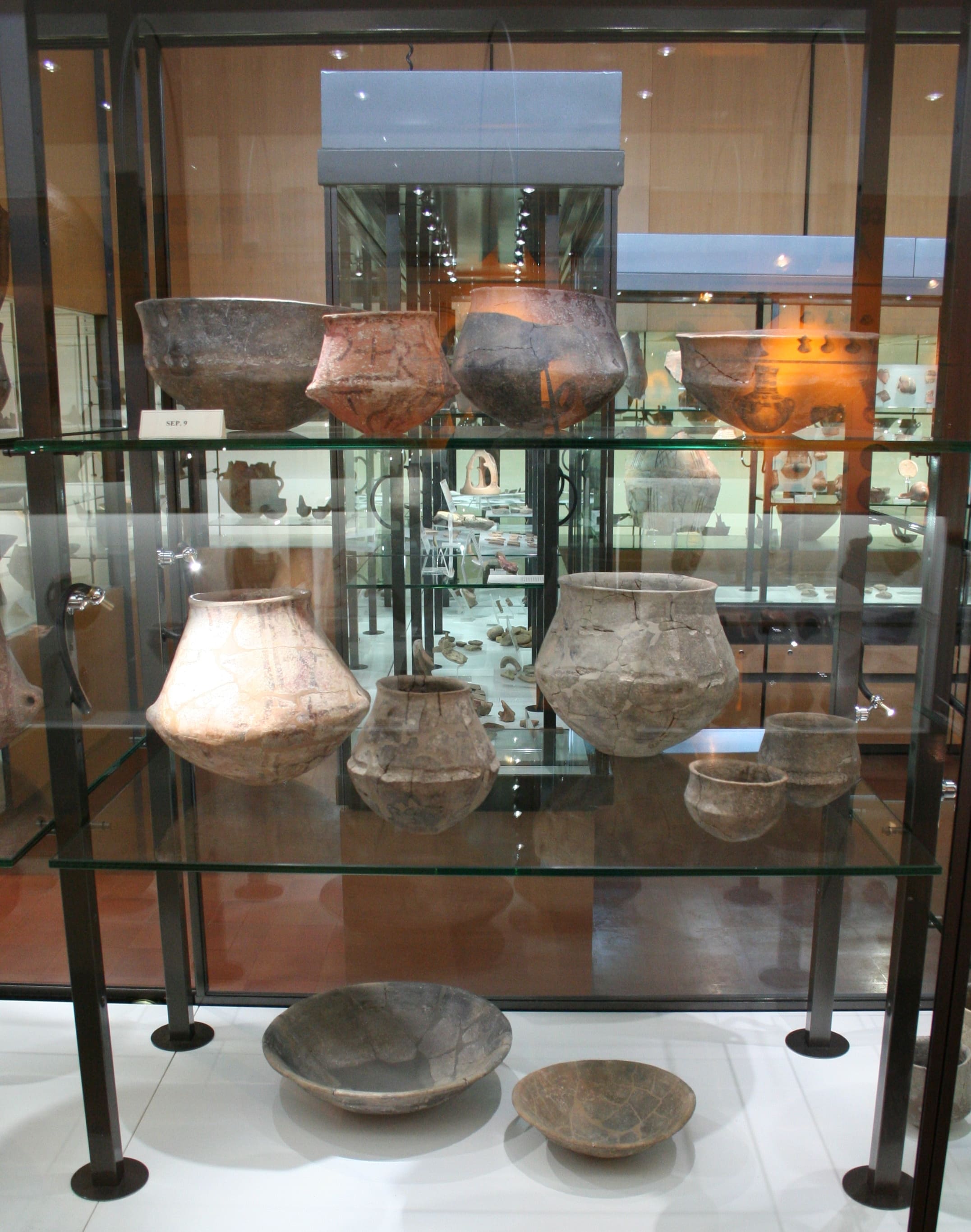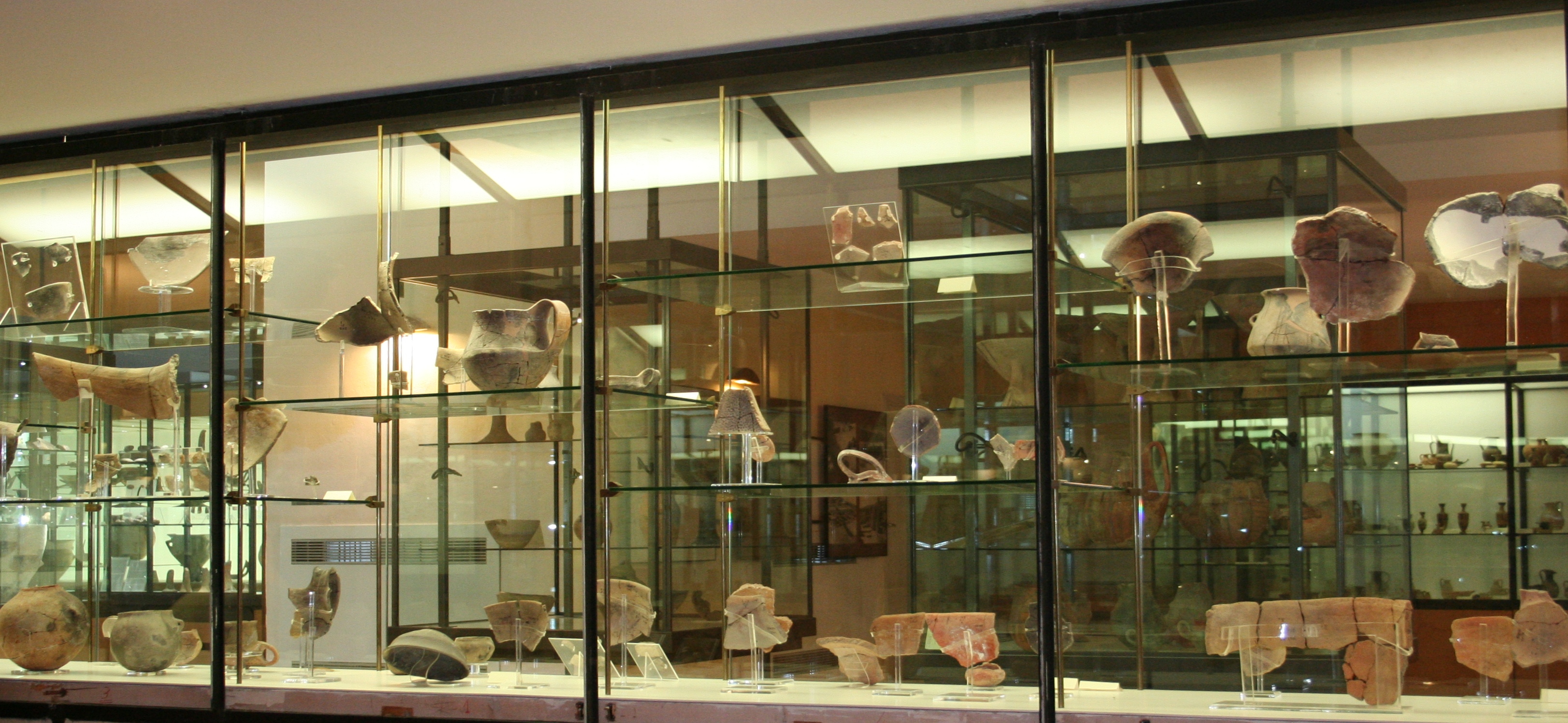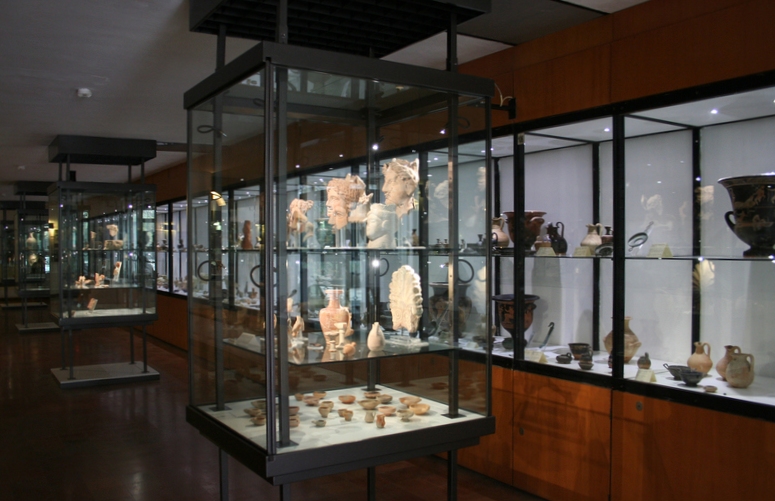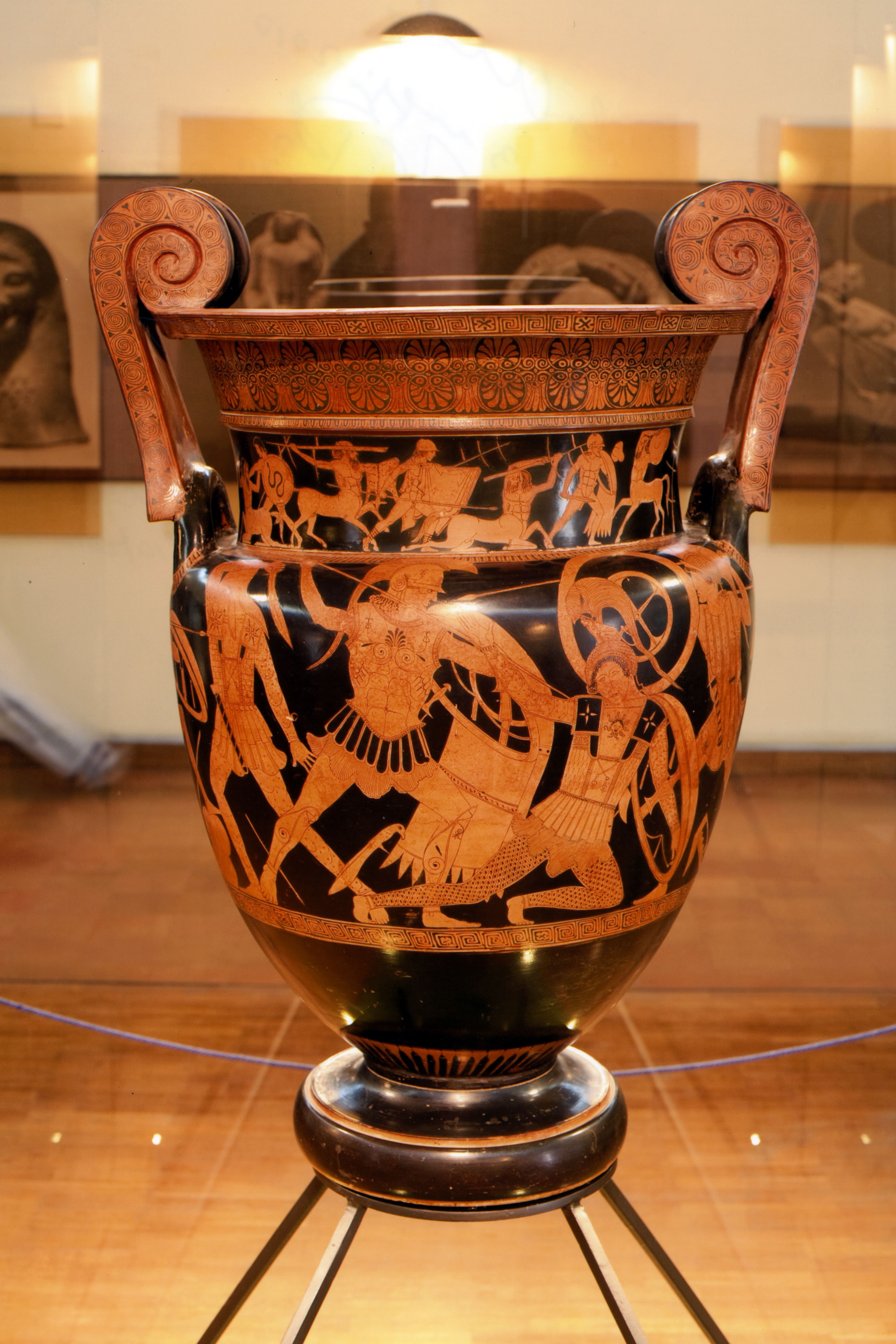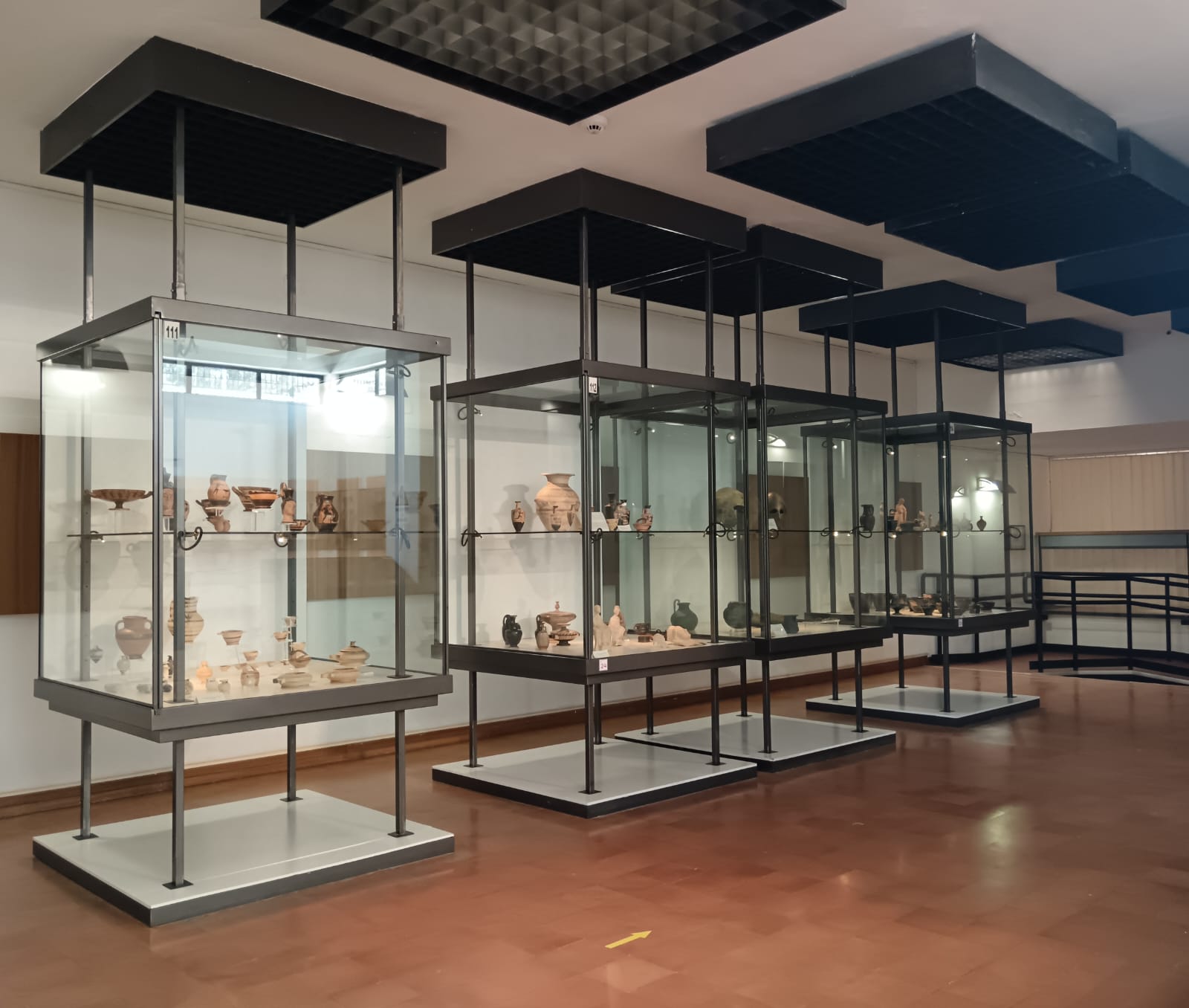The province of Agrigento has cultural roots that go back to prehistoric times, with human settlements dating back to the early Neolithic period. Rooms XII-XIV of the museum display prehistoric and historical artifacts from the province of Agrigento, arranged in chronological and topographical order. Room XII is dedicated to prehistory and protohistory, with materials from the sites of Palma di Montechiaro, including Piano Vento, with Eneolithic settlements and necropolises (4th-3rd millennium BC), and Monte Grande, with a sanctuary linked to sulfur production. Significant finds have been discovered here, such as a model of a temple and ceramics in the Castelluccio style. Educational panels illustrate the historical and cultural evolution of the territory up to the Greek colonization.
Room XIII displays finds from western Agrigento, such as the Venuses of Cozzo Busonè (Raffadali), ceramics from the Ticchiara cave (Favara), and the tholos tombs of Sant'Angelo Muxaro, identified with ancient Camico. In Ribera, the Ciavolaro necropolis documents the use of ritual meals and the evolution of funerary practices, while Sciacca is represented by Tranchina and Monte Kronio, with karst caves where evidence of cult practices from the Neolithic period to the 6th century BC has been found. Room XIV shows the process of Hellenization through the sites of Montagnoli, Eraclea Minoa, Monte Adranone, and Rocca Nadore. Eraclea Minoa, founded in the 6th century BC, reveals funerary objects and a fragment of a vase with a telamon, similar to those of the temple of Zeus at Akrágas, while Monte Adranone, active from the 8th to the 3rd century BC, presents artifacts that mix Sican, Greek, and Punic influences. Vito Soldano (Canicattì), with a thermal building from the Constantinian era, documents the continuity of habitation until late antiquity. One room is dedicated to the motherland of Gela, the first Rhodian-Cretan colony founded in Sicily in 689-688 BC, where the famous Attic red-figure krater by the Niobid painter is on display, depicting the death of Penthesilea at the hands of Achilles.
The exhibition concludes with archaeological evidence from the province of Enna, in particular from the site of Montagna di Marzo, and with finds from Vassallaggi and Monte Raffe, in the province of Caltanissetta.

